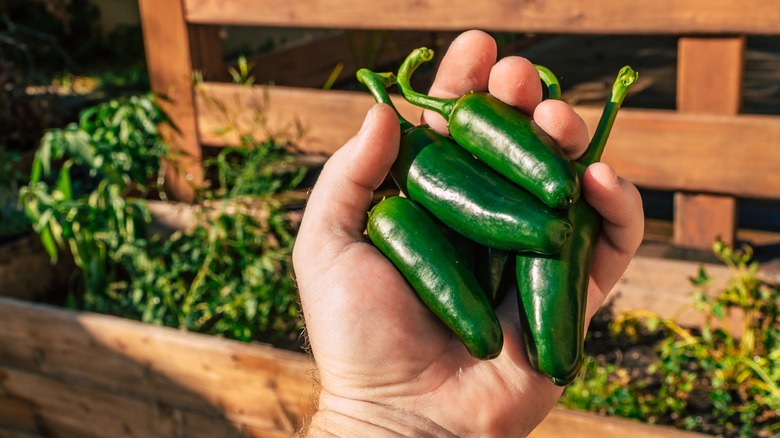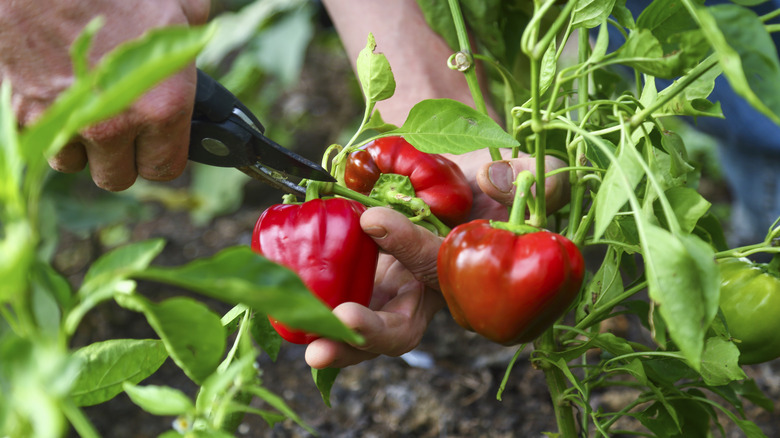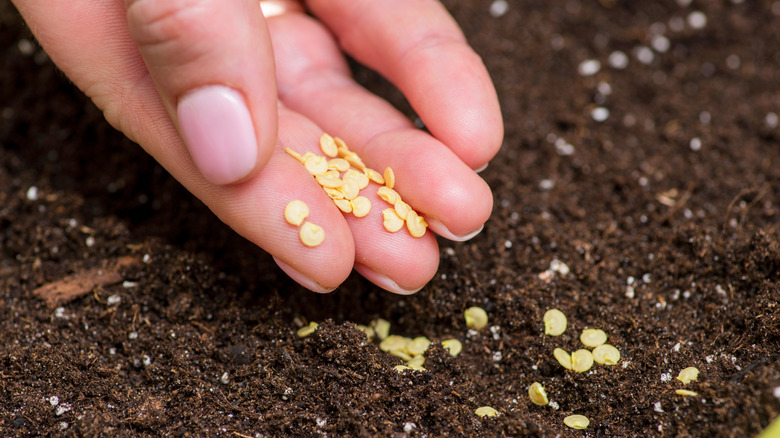Why You Should Think Twice Before Planting Jalapeños With Other Peppers
Placing the same types of plants near one another is a common strategy for many gardeners. You might put jalapeños with other peppers since the plants share the same care requirements, as it seems like it would be easier to care for a group of plants that need the same things than spreading them out throughout your garden. However, placing all your peppers too close together could actually result in stunted and diseased plants. When all the crops in one very small area need the same resources, it can cause them to compete to get what they need and hurt themselves in the process.
Companion planting, or arranging your garden so specific plants that will benefit one another are grown in close proximity, will relieve some of the pressures that come with growing the same species in one area. This strategy can keep away pests that carry diseases and make better use of the perhaps limited space you have. Spreading out your pepper plants throughout your garden could come with some incredible benefits, while keeping them too close together may have some negative consequences.
It's a competition where everyone could lose
Each plant has its own requirements for water, sunlight, and nutrients, which is why growing similar crops together seems like a good idea. If every type of pepper needs as much sunlight as possible, why not put them all in the sunniest location? However, while this can sometimes be beneficial, if all the plants in a very small area are after the same thing, they may eventually have to compete if there's not enough to go around. For instance, taller peppers could eventually cast too much shade over smaller plants and stunt their growth. If your garden goes through a dry spell, all the peppers may have to fight to ensure they get as much water as they need, which would ultimately make some plants smaller because they didn't win the competition.
Another reason you may want to keep jalapeños and other peppers apart is because of the potential for diseases. You might see damping off, phytophthora blight, or bacterial spots. Infectious diseases will spread from plant to plant if foliage or fruit touch each other. Issues with the soil could also take out all of your pepper plants since they all have the same requirements and are in the same area. If you give your plants too much water or don't give them enough sun, every plant will be affected and you may be unable to save them all.
Pair your jalapeños with the right plants
However, at the same time, some believe that many types of peppers and jalapeños can be companion plants, as long as they are well spaced out. Make sure each plant has enough room to grow and nutrients so that they don't have to complete for resources. At the same time, if you want to avoid these issues completely, simply try planting your jalapeños with other plants. Basil will benefit peppers like jalapeños because it repels a host of pests including aphids, thrips, and spider mites. It's also believed to improve the peppers' flavor. Other herbs like dill, cilantro, and oregano won't compete for space and will attract pollinators while repelling bad insects. Spinach and carrots also don't need lots of room to grow and act as a ground cover to minimize weeds.
Marigolds are pretty short, so they won't compete for space with jalapeños. They'll also repel nematodes hidden in the soil that go after roots. These nematodes can kill your pepper plants, so don't overlook the power of this flower. Tomatoes are good neighbors because jalapeños benefit these plants by keeping certain pests away. Further, onions can keep away slugs, which like to feast on these spicy peppers. And, if you add tomatoes and onions near your jalapeño plant, you'll also get the benefit of a salsa garden.


